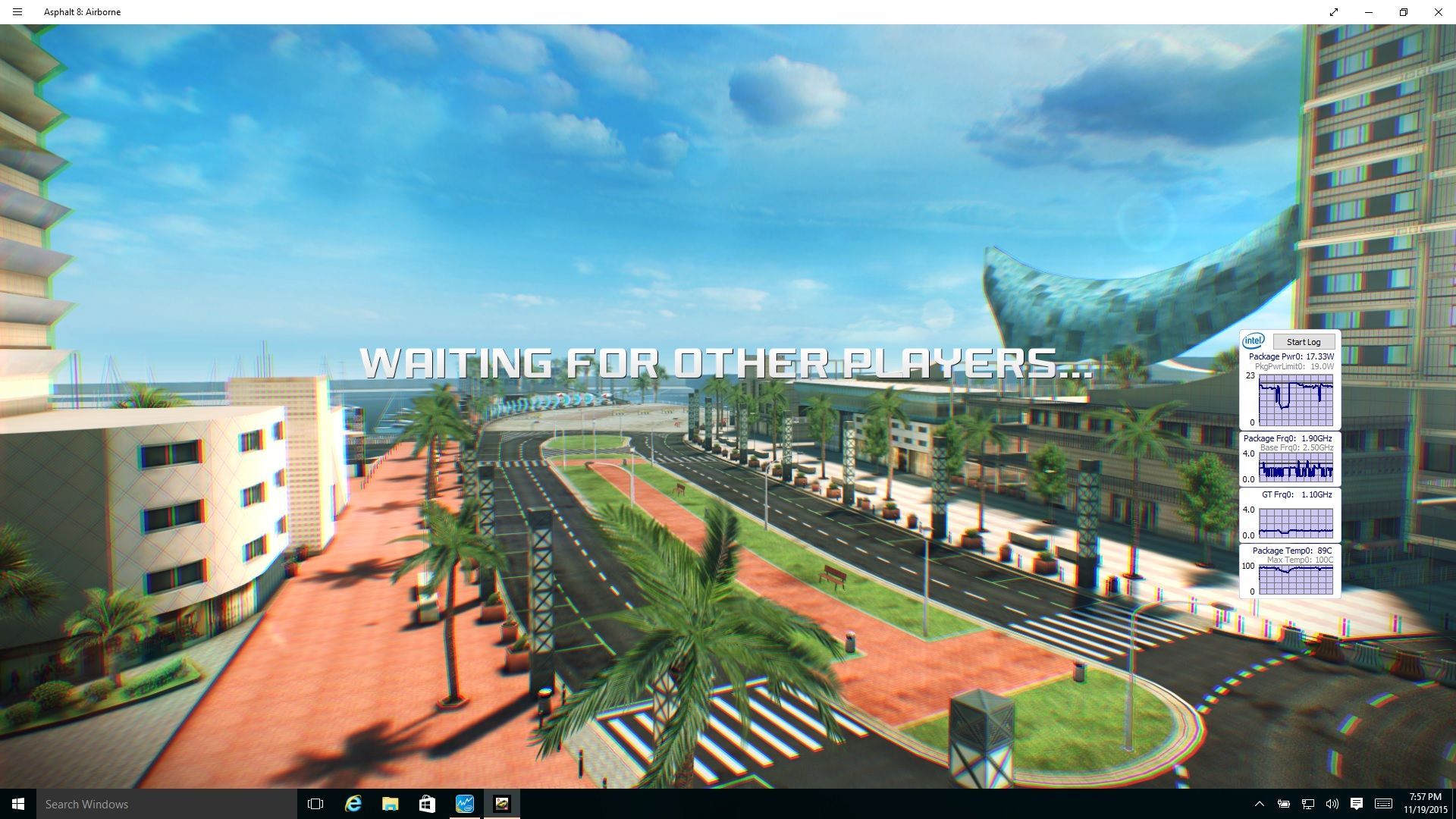theveterans
Member
I have a friend who wants to get the Surface Pro 4 i7 model after seeing my SP3 i5 without throttling issues when running CPU & GPU intensive games. However, while browsing on YouTube to look for SP4 i7 gaming performance, I saw a video that shows how SP4 throttles to equal or worse than Core M3 performance when CPU and GPU are pegged to the max due to the 15W Package (not core) limit per video shown below:
Is anybody experiencing the same throttling issues with their i7 SP4 when gaming?
PS. I notice that Intel dropped the Package Power limit to 15 Watts in Skylake as shown on the video where it was 19 Watts for Haswell (15 Watts for CPU core TDP though). Below is the screenshot where my SP3 i5 runs at 15 - 19 Watts of power during CPU and GPU intensive games. Turbo Boost turns off automatically (1.9 GHz base clock) to allocate power to the HD 4400 GPU so that it is always maxed out at 1 - 1.1 GHz and no FPS drops whatsoever on Asphalt 8 game and CS GO.

Is anybody experiencing the same throttling issues with their i7 SP4 when gaming?
PS. I notice that Intel dropped the Package Power limit to 15 Watts in Skylake as shown on the video where it was 19 Watts for Haswell (15 Watts for CPU core TDP though). Below is the screenshot where my SP3 i5 runs at 15 - 19 Watts of power during CPU and GPU intensive games. Turbo Boost turns off automatically (1.9 GHz base clock) to allocate power to the HD 4400 GPU so that it is always maxed out at 1 - 1.1 GHz and no FPS drops whatsoever on Asphalt 8 game and CS GO.
